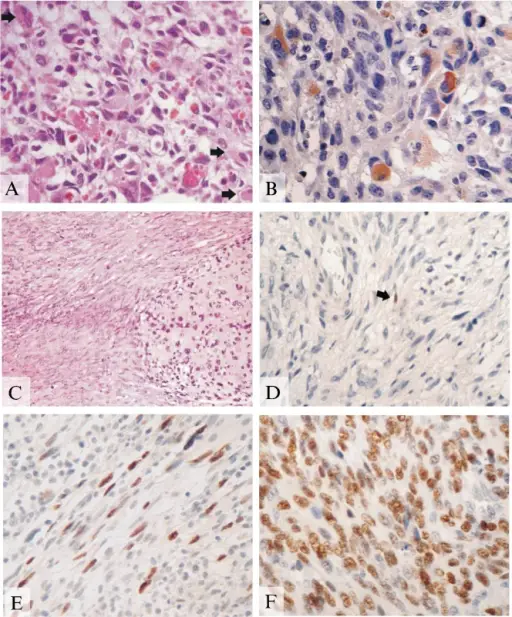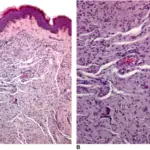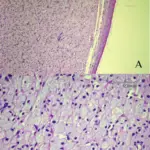A malignant peripheral nerve sheath tumor (MPNST) is a form of a malignant neoplasm of the connective tissue surrounding nerves.
What is the Pathology of Malignant Peripheral Nerve Sheath Tumor?
The pathology of malignant peripheral nerve sheath tumor is:
-Etiology: The cause of malignant peripheral nerve sheath tumors is either sporadic or due to NF-1 mutation.
-Genes involved: NF-1.
-Pathogenesis: The sequence of events that lead to malignant peripheral nerve sheath tumors is the germline mutations in NF1 predisposed to the development of peripheral nerve sheath neoplasms in patients with type 1 neurofibromatosis.
-Histology: The histology associated with malignant peripheral nerve sheath tumors shows a marbled appearance due to alternating hypocellular and hypercellular areas with perivascular accentuation.
How does Malignant Peripheral Nerve Sheath Tumor Present?
Patients with malignant peripheral nerve sheath tumors typically affect both males and females 40 years and above. The symptoms, features, and clinical findings associated with malignant peripheral nerve sheath tumor include peripheral edema, difficulty in moving the extremity, pain, and numbness.
How is Malignant Peripheral Nerve Sheath Tumor Diagnosed?
A malignant peripheral nerve sheath tumor is diagnosed by MRI.
How is Malignant Peripheral Nerve Sheath Tumor Treated?
Malignant peripheral nerve sheath tumor is treated predominantly by surgical resection. Adjunctive radio and chemotherapy may also be used.
What is the Prognosis of Malignant Peripheral Nerve Sheath Tumor?
The prognosis of malignant peripheral nerve sheath tumors is poor with high metastatic potential.



